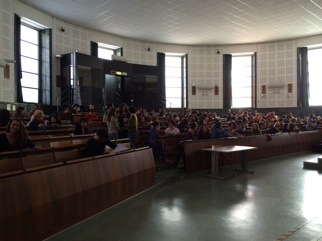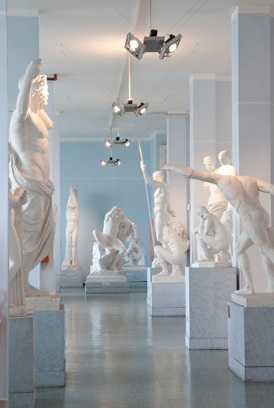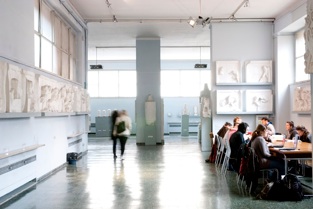Roma - La Sapienza University of Rome
December 2 - 5, 2014

Roma - La Sapienza University of Rome
December 2 - 5, 2014
The main entrance to the University Campus is at Piazzale Aldo Moro, 5 (San Lorenzo neighborhood, near the Termini train station), but there are also other side entrances to the campus.
Faculty and department links can help you finding your way around La Sapienza.
MAPS
La Sapienza Maps – helps you to identify buildings, classrooms and other main areas of the main La Sapienza campus.
Città Universitaria - the main campus (printable PDF)
Public Transport - useful bus and subway numbers with links to public transport systems
SATELLITE NAVIGATOR
The Satellite Navigator service allows users to select and map a route with Google Maps and Street View.


La Sapienza University of Rome, founded in 1303 by Pope Boniface VIII, is one of the oldest universities in the world and a high performer among the largest universities in international rankings.
Since its founding over 700 years ago, La Sapienza has played an important role in Italian history and has been directly involved in key changes and developments in society, economics and politics. It has contributed to the development of Italian and European science and culture in all areas of knowledge.
The future of La Sapienza starts today thanks to its rich past and the contribution of the entire University community, whose main objectives are research, teaching and education. Faculty, students, technical and administrative staff are part of this community and thanks to their respective skills and responsibilities, they all contribute to its reputation and growth.
The main campus, designed by Marcello Piacentini, was opened in 1935. It is situated close to the city centre, and is the largest in Europe - a real city within a city where teaching activities are integrated with libraries, museums as well as comprehensive student services. Faculties and Departments also carry out their activities in decentralized locations in different parts of the city. There are two other university campuses elsewhere in Lazio.
La Sapienza offers a vast array of courses including degree programs, PhD courses, one to two year professional courses and Specialization Schools in many disciplines, run by 63 Departments and 11 Faculties. With the 2011-2012 academic year, the University inaugurated the School for Advanced Studies and evaluates candidates on the basis of educational merit, that provides students with courses and activities aimed at encouraging and developing their capabilities through scientific, cultural and interdisciplinary enrichment.
It is in every regard a research and teaching university: La Sapienza carries out outstanding scientific research in most disciplines, achieving impressive results both on a national and international level.
La Sapienza also enhances research by offering opportunities to academia on a global scale. Thanks to a special program for visiting professors, many foreign researchers and lecturers periodically visit the University and contribute greatly to the quality of education and research programs.
Some 8,000 foreign students are regularly enrolled at La Sapienza. In addition to this, La Sapienza encourages international exchange: there are over 1,100 incoming and outgoing exchange students per year, thanks to several mobility programs.
The meeting will take place in the AULA MAGNA at the Faculty of ARTS AND HUMANITIES of La Sapienza University - building CU003 - Piazzale Aldo Moro, 5 - Roma.
Coffee breaks and lunches will be served at the Classical Art Museum where, following the model of the German gipsoteche, 1200 casts of Greek sculptures (originals and Roman copies) are on display



